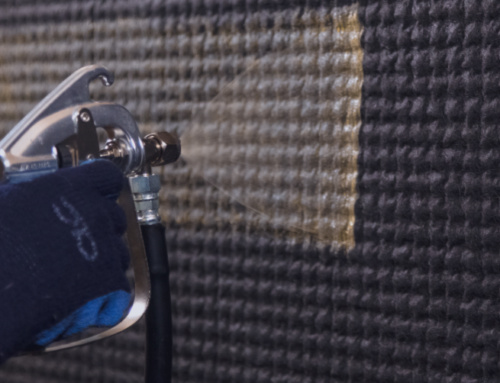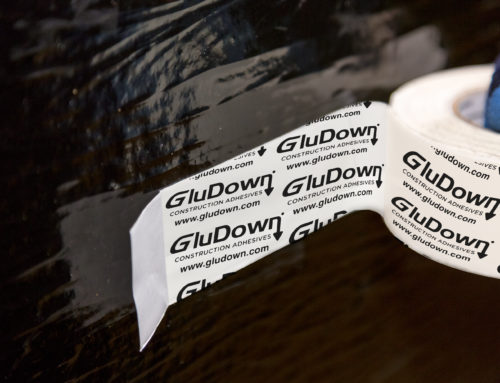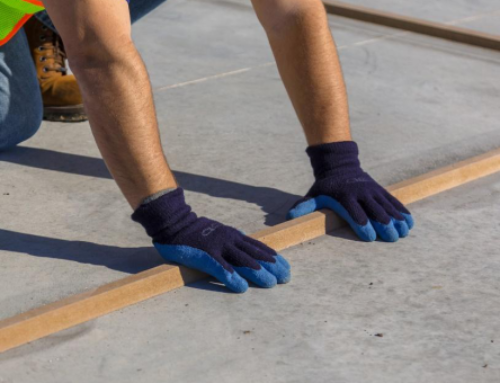Problems Can Be Avoided by Gluing Down
Gluing down with adhesives to bond materials in tilt-up construction projects has a lot of advantages as compared to nails or screws. Using nails or screws is time consuming and labor intensive. It can result in increased cost, plus fatigue and potential strain for workers.
The health of people who use our products is one of our highest priorities. That leads us to address another important drawback to nails and screws, namely the production of airborne particulates that can endanger workers’ health.
To address this problem, OSHA issued a new ruling (1926.1153) that took effect on September 23, 2017, for the construction industry. It’s intended to curb lung cancer, silicosis, chronic obstructive pulmonary disease and kidney disease in American workers by limiting their exposure to respirable crystalline silica.
Respirable crystalline silica particles are at least 100 times smaller than ordinary playground or beach sand. They can be created when cutting, sawing, grinding, drilling and crushing stone, rock, concrete, brick, block and mortar. Other activities that can generate them include abrasive blasting with sand; sawing brick or concrete; sanding or drilling into concrete walls; grinding mortar; and manufacturing brick, concrete blocks, stone countertops or ceramic products.
Tilt-up construction routinely involves drilling, for everything from connecting brace shoes to a floor slab or pilot holes for attaching forms. And that creates silica dust, a potential hazard particularly for craftsmen working close to a surface to ensure that it’s perfectly flat. In addition, silica dust can be trapped between wood forms or foam board and a slab. That dust is then released when those materials are stripped off. Attempting to blow these particles away is not feasible, since they will just be carried to another area of the site.
On September 20, OSHA issued an Enforcement Memorandum with the following details:
- The Respirable Crystalline Silica construction standard, 29 CFR § 1926.1153, becomes enforceable on September 23, 2017. The standard establishes a new 8-hour time-weighted average (TWA) Permissible Exposure Limit (PEL) of 50 µg/m3, an action level (AL) of 25 µg/m3, and a host of ancillary requirements.
- During the first 30 days of enforcement, OSHA will carefully evaluate good faith efforts taken by employers in their attempts to meet the new construction silica standard. OSHA will render compliance assistance and outreach to assure that covered employers are fully and properly complying with its requirements. Given the novelty of the Table 1 approach, OSHA will pay particular attention to assisting employers in fully and properly implementing the controls in the table. OSHA will assist employers who are making good faith efforts to meet the new requirements to assure understanding and compliance.
- If, upon inspection, it appears an employer is not making any efforts to comply, OSHA’s inspection will not only include collection of exposure air monitoring performed in accordance with Agency procedures, but those employers may also be considered for citation. Any proposed citations related to inspections conducted in this time period will require National Office review.
To make an effective transition under this new ruling, companies will likely need to run tests to determine the optimum mitigation methods, whether those are a wet clean process or a dust barrier system. Dealing with these substances may also require the purchase of attachments for drills, vacuums for the particulates and generators to run the vacuums.
We encourage builders to become familiar with this ruling and its requirements. To learn more about other important advantages of gluing down, be sure to check out “Why Is Gluing Down the Best Tilt-Up Securing Method?”.





